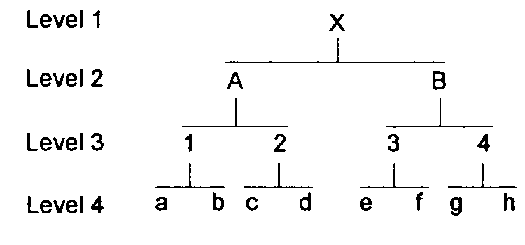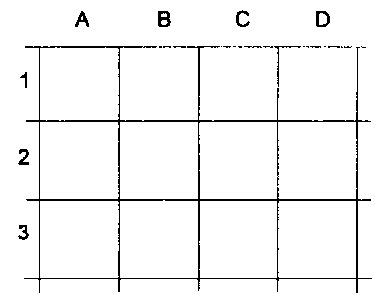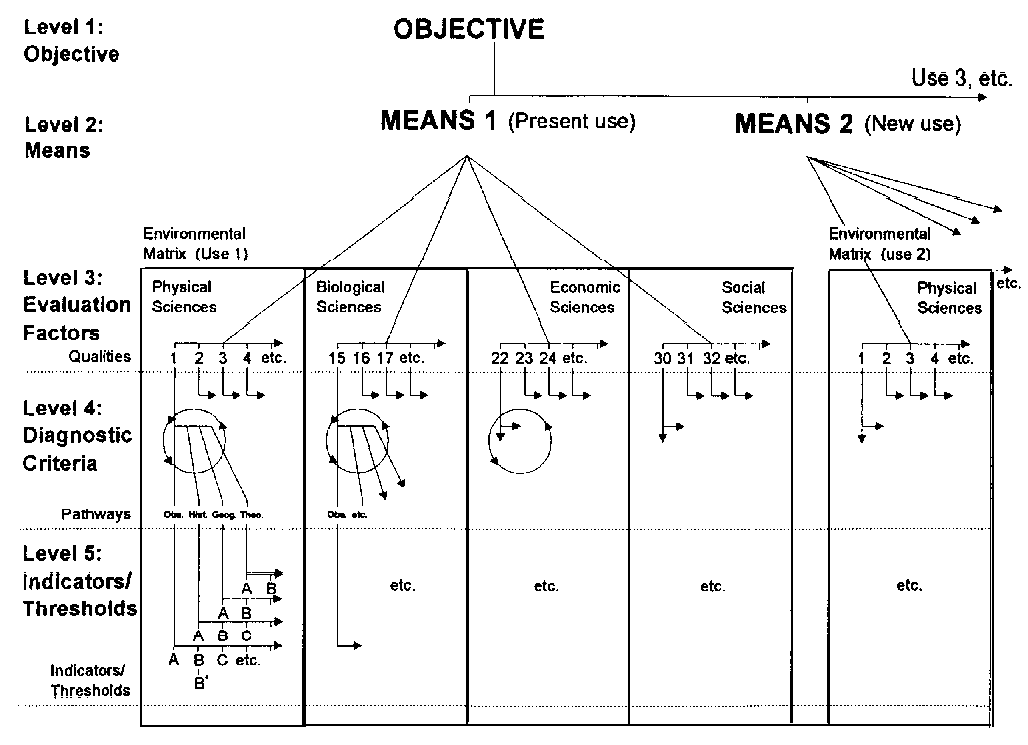The reader will have appreciated that the pathway shown in Figure 1 is a drastic simplification of the actual form of the FESLM structure. In reality, the pathway will divide repeatedly at each level; and additional complications of separation and feedback are necessary to reflect the processes of establishing cause and effect and to recognize the differing nature of the evaluation factors and the differing expertise required to unravel them.
In principle, the planned form of the Framework is part hierarchy, part matrix. Basically, the Framework is hierarchical, like a family tree, descending vertically from the defined land use at the top through a succession of diagnostic levels (the horizontal parts of the frame). At each level the pathway divides into more and more branches, each reflecting a sharpening focus on separate environmental criteria or factors relevant to land use. The intention is to identify, at the lowest level of the Framework, actual 'threshold' values of relevant environmental 'indicators' which, together, will assist the user to assess and monitor sustainability.
In the lower, diagnostic, part of the Framework it is thought necessary to further separate the structure into vertical columns which reflect different subject areas (disciplines) in the total environment. In the early stages of analysis, at least, practical reasons make it desirable to separate factors which belong respectively to the physical, biological, economic and social environments. The 'factors', 'indicators', 'criteria' and 'thresholds' relevant to each of these environments differ greatly in kind and require different specialist expertise in their investigation.
Effectively, the separate environmental columns divide the hierarchy into separate diagnostic frameworks. But the whole is best seen as a connected matrix underlying the hierarchy. Viewed in this way, the horizontal levels of the hierarchy are seen not only to cut across but also to connect the vertical columns-thus drawing attention to the important inter-relationships between the physical, biological, economic and social environments. These relationships can have a crucial bearing on sustainability and must always be kept in mind.
Figure 2 merely shows, in sketch form, how the combination of hierarchy and matrix is envisaged. Figure 3 shows how this structure is applied to the FESLM itself. Note, in particular, in Figure 3, that the analytical sub-framework is repeated in each column of the environmental matrix and that the whole environmental matrix, with included sub-frameworks, is repeated for each use.



NOTE: In the FESLM (see Figure 3) the structure of the lower levels (3-5) of the hierarchy is repeated in each of the vertical columns of the matrix on which the hierarchy is superimposed. The matrix and the lower levels of the hierarchy are all repeated for each use.

The names of the separate levels of the hierarchy shown in Figure 3 are those described previously (Chapter 2) and are repeated here only for convenience:
Group |
Level |
Name |
Purpose
|
1. |
Objective |
2. |
Means |
|
Analysis
|
3. |
Evaluation Factors |
4. |
Diagnostic Criteria (cause and effect and observations) |
|
5. |
Indicators and Thresholds |
The intention and content of these separate levels is explained in Part 4 in the context of constructing an Action Framework.
Experience in using the Framework may show it to be desirable to increase the number of columns in each matrix so that separate aspects of the different environments may be analyzed separately; eg. soils and climate (within the physical environment) or legal, political, and administrative considerations (within the social environment). Increasing the complexity of the matrix would complicate the Framework as a whole, but the degree of specialist knowledge associated with each environmental aspect may make this step desirable.
The complete Framework is likely to be so complex that presentation in graphic form would not be useful even if, indeed, it were feasible. The associated data will be most conveniently stored and used within a computer, but it could also be published in book form; the data being organized into chapters and subdivided into sections in accordance with the columns and horizontal layers (or vice versa) of the matrix.
The Master Framework is conceived as embracing all environmental factors which bear upon sustainability without reference to their importance to any particular use or any specific locality. Through its various levels it will seek to show the relationships which, in general terms, identify certain factors as 'indicators' of sustainability and the 'criteria' which determine what levels (or expressions) of each 'indicator' may be regarded as diagnostic 'thresholds'. Eventually, the Master Framework will provide a comprehensive checklist of these evaluation factors.
In principle, there will be only one Master Framework, applicable globally, but, in practice, it may prove more satisfactory to develop separate Master Frameworks for each major ecological region. If so, cooperative development and close coordination of content will be essential to avoid confusion and duplication of work.
The Action Frameworks, of which
there will be as many as there are uses to consider and locations to evaluate, will have
the same structure as the Master Framework; but all those factors in the checklist which
are not immediately relevant to the use and locality under consideration will be
ruthlessly eliminated. The construction of an Action Framework and this process of
elimination is discussed in Chapter 4.